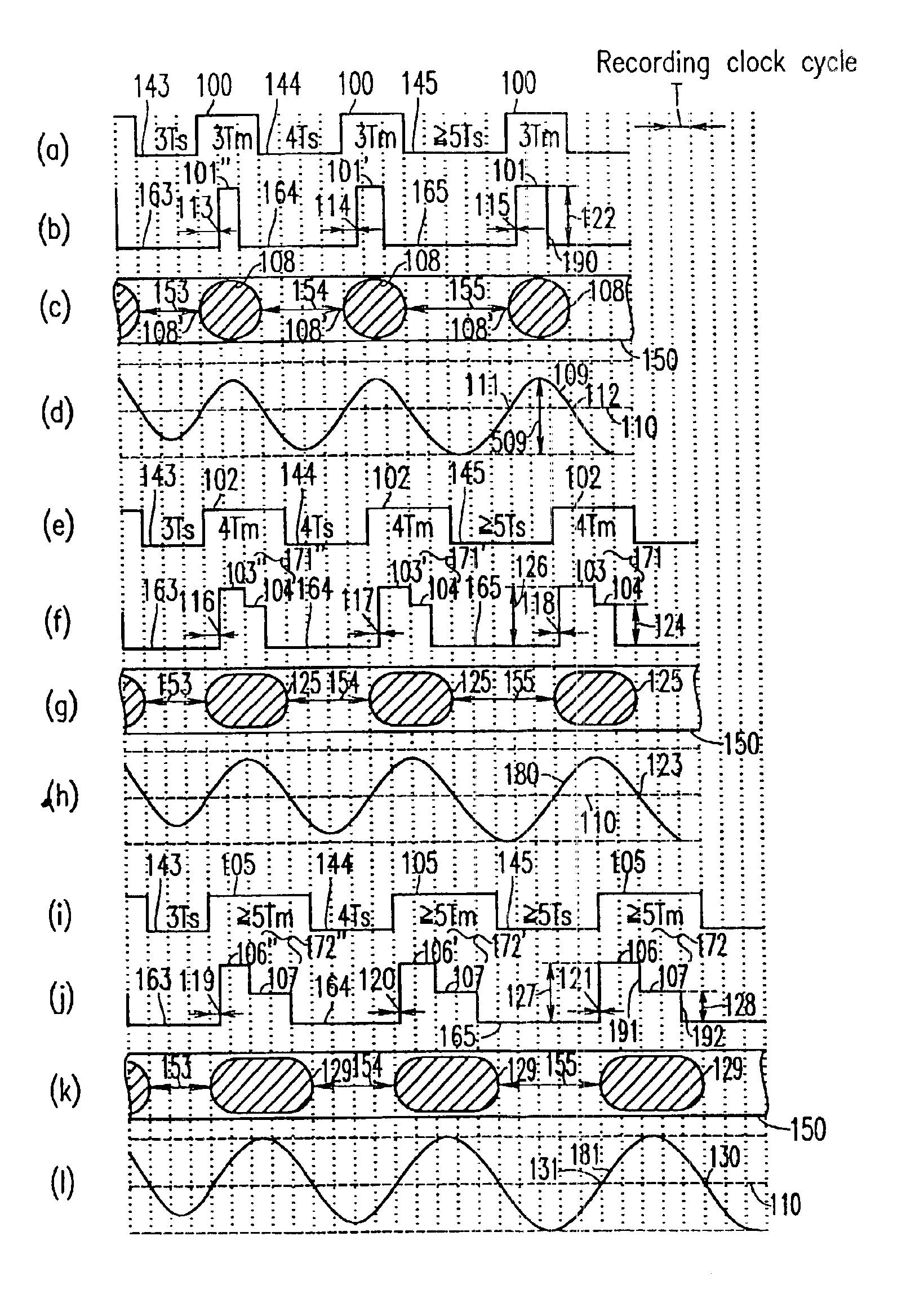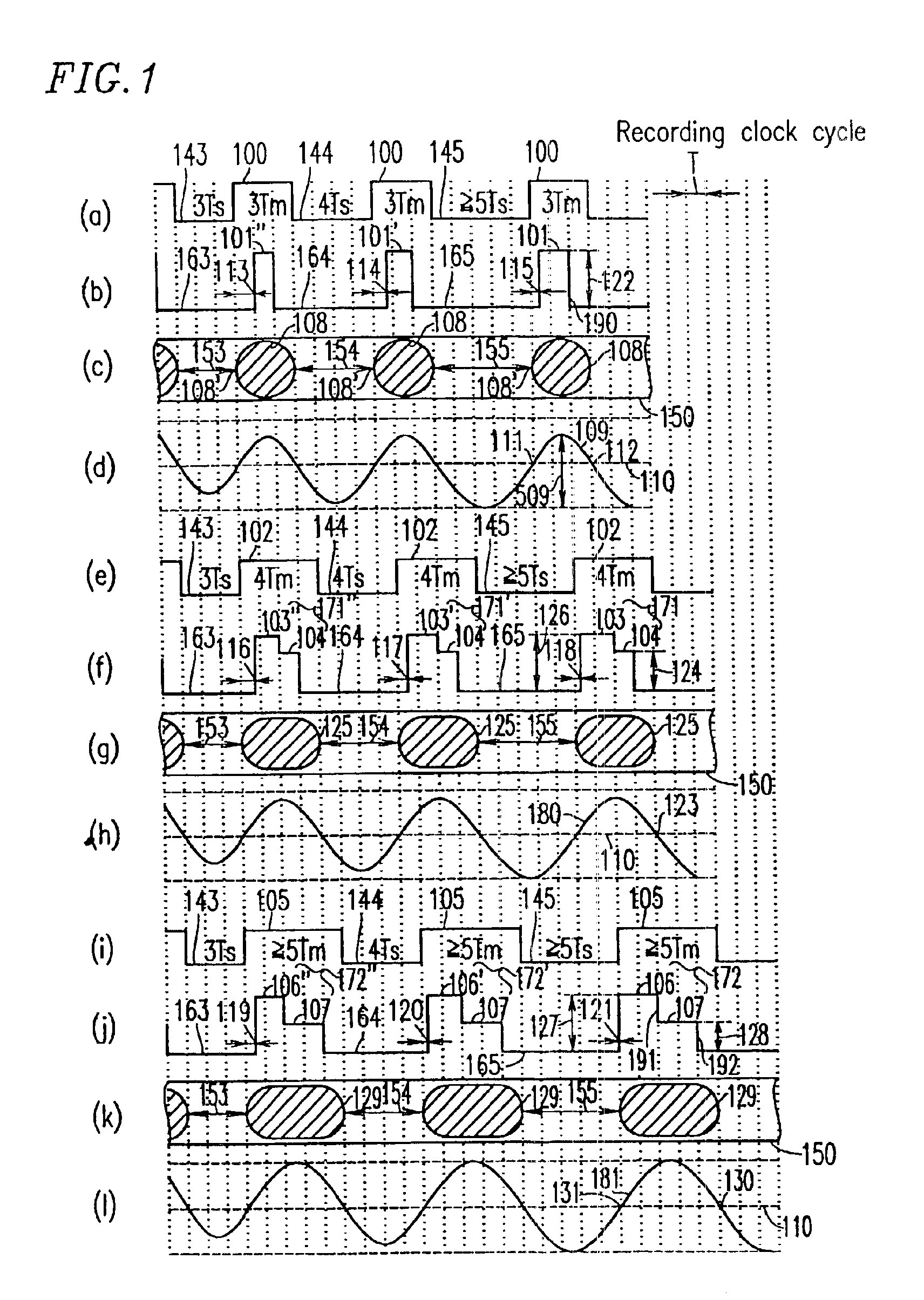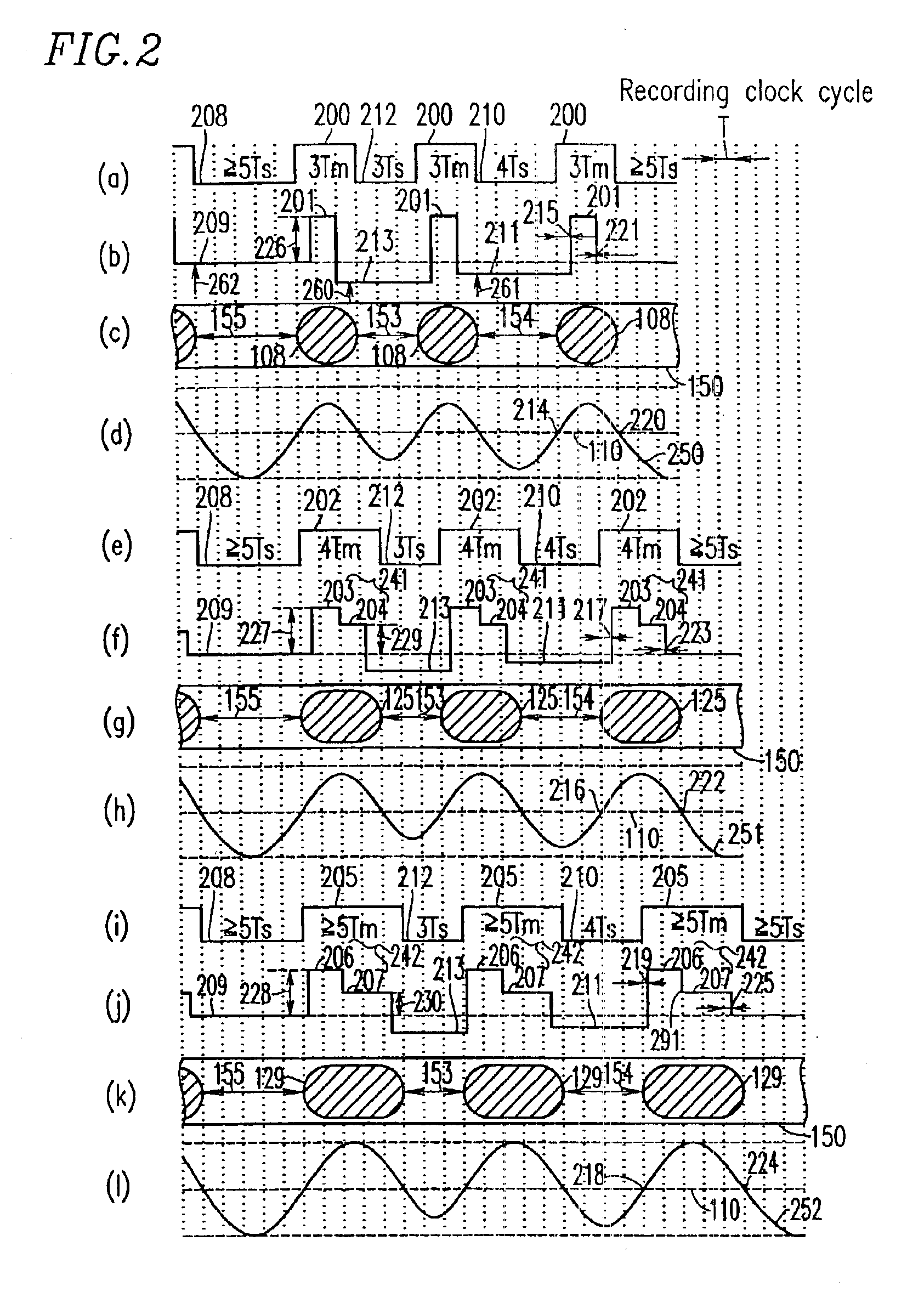Method for recording/reproducing data on/from optical disk
- Summary
- Abstract
- Description
- Claims
- Application Information
AI Technical Summary
Benefits of technology
Problems solved by technology
Method used
Image
Examples
embodiment 1
(Embodiment 1)
[0053]FIG. 1 is a diagram illustrating a method for recording / reproducing data on / from an optical disk and a method for adjusting a waveform (write strategy) and recording compensation parameters of a recording pulse for use in the data recording / reproducing method, which are described as Embodiment 1 of the present invention.
[0054]In FIG. 1, vertical dotted lines represent units of time and each division corresponds to one cycle T of the recording clock. From the top, FIG. 1(a) illustrates data in which a High-level signal 100 is allocated as a mark and Low-level signals 143, 144 and 145 are allocated as spaces, and illustrates a waveform of the recorded data 3 for use in the recording / reproducing apparatus 1000 of FIG. 3. The recorded data shown in FIG. 1(a) is formed of a series of the High-level signals 100 in the cases where lengths of spaces immediately before the shortest marks 108 of 3Tm are 3Ts, 4Ts and 5Ts or more.
[0055]FIG. 1(b) illustrates recording pulses ...
embodiment 2
(Embodiment 2)
[0098]FIG. 2 is a diagram illustrating a method for recording / reproducing data on / from an optical disk and a method for adjusting the write strategy and recording compensation parameters of a recording pulse for use in the data recording / reproducing method, which are described as Embodiment 2 of the present invention. In the method illustrated in FIG. 2, same elements as those of Embodiment 1shown in FIG. 1 are denoted by same reference numerals, and therefore detailed description thereof is omitted.
[0099]FIGS. 2(a)-2(d) respectively illustrate recorded data, a recording pulse, recorded marks and an equalized reproduced signal in the case where shortest marks of 3Tm are recorded / reproduced. FIGS. 2(e)-2(h) respectively illustrate recorded data, a recording pulse, recorded marks and the equalized reproduced signal in the case where the long marks 125 of 4Tm are recorded / reproduced. FIGS. 2(i)-2(l) respectively illustrate recorded data, a recording pulse, recorded marks ...
embodiment 3
(Embodiment 3)
[0129]FIG. 8 is a diagram illustrating a method for recording / reproducing data on / from an optical disk and a method for adjusting the write strategy and recording compensation parameters of a recording pulse for use in the data recording / reproducing method, which are described as Embodiment 3 of the present invention. FIG. 8(a) illustrates recording pulses 810 and 811 respectively used for recording a long mark and a shortest mark using a recording method similar to Embodiments 1 and 2. FIG. 8(b) illustrates a long mark 820 and a shortest mark 821 respectively recorded by the recording pulse 810 and 811. The recording pulse for use in the recording / reproducing method of the present invention can also be performed and effective when preheat and cooling pulses described below are added thereto.
[0130]FIG. 8(c) illustrates an embodiment in which a preheat pulse 802 is added at an end position of the recording pulse 801 for forming a space 812. Since the preheat pulse 802 f...
PUM
 Login to View More
Login to View More Abstract
Description
Claims
Application Information
 Login to View More
Login to View More - R&D
- Intellectual Property
- Life Sciences
- Materials
- Tech Scout
- Unparalleled Data Quality
- Higher Quality Content
- 60% Fewer Hallucinations
Browse by: Latest US Patents, China's latest patents, Technical Efficacy Thesaurus, Application Domain, Technology Topic, Popular Technical Reports.
© 2025 PatSnap. All rights reserved.Legal|Privacy policy|Modern Slavery Act Transparency Statement|Sitemap|About US| Contact US: help@patsnap.com



